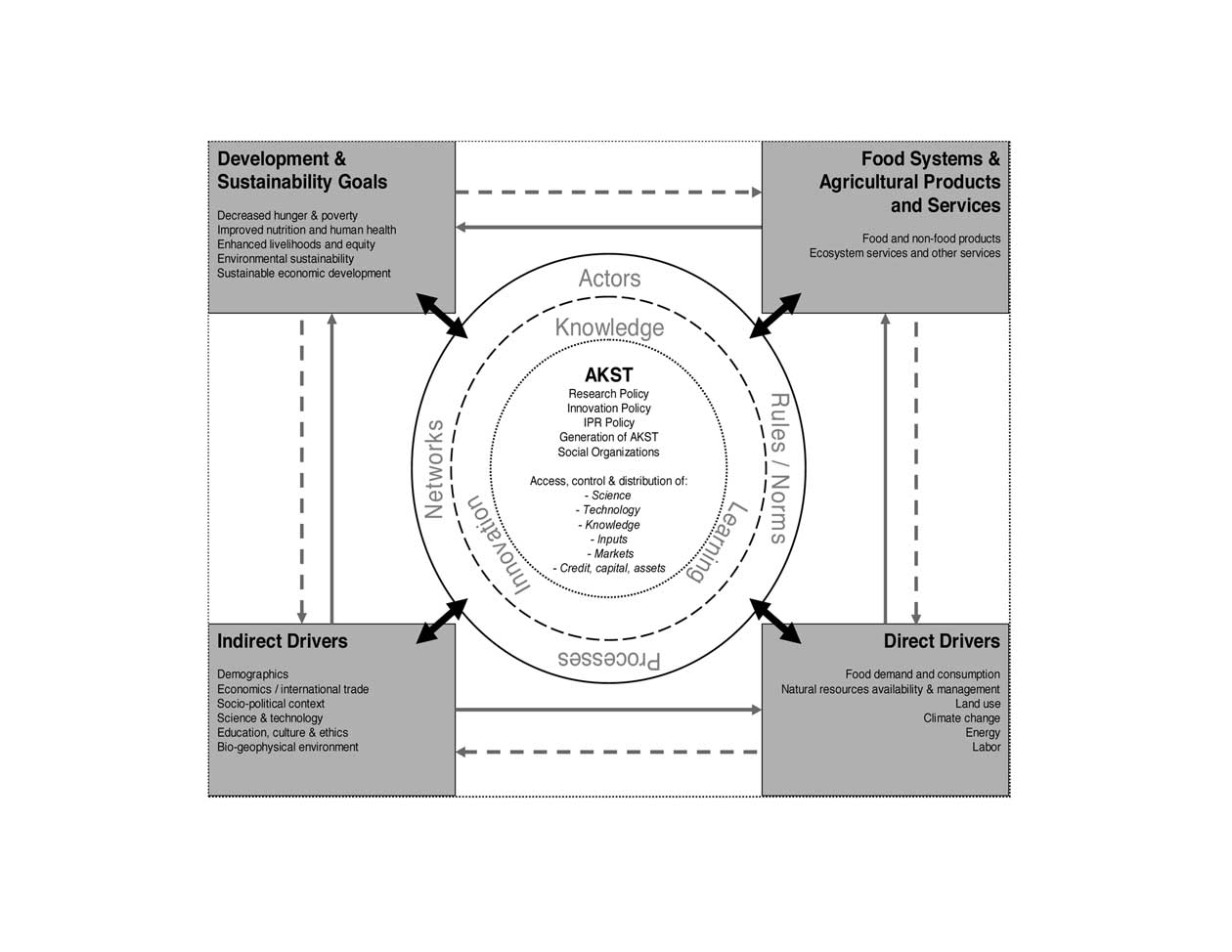
| Previous | Return to table of contents | Search Reports | Next |
| « Back to weltagrarbericht.de | ||
4 | North America and Europe (NAE) Report
|
• Bioenergy • Biotechnology • Climate change • Human health • Natural resource management • Traditional knowledge and community based innovation • Trade and markets • Women in agriculture The Global and Sub-Global assessments contributed experts on these issues to develop key messages and integrate their treatment across the reports. 1.1.3 Conceptual framework 1.1.3.1 Conceptual diagram AKST is the intersection of knowledge, science and technology (including that developed in other realms) with agricultural systems. It is influenced by and draws from other kinds of knowledge and technology in important ways not confined to food production. For example, advances in transportation and communications technology have been key to the globalization and integration of global value chains. While the term "AKST" is often used in the IAASTD as if it were a consistent, coherent bloc, there are many different forms and permutations of AKST that have different development histories and impacts. For example, the AKST underlying traditional practices of hunting or grazing on communal lands is vastly different from the AKST leading to the patenting of goats that have been genetically engineered to express human lysozyme in their milk. Therefore, in referring to drivers of AKST or impacts in specific circum- |
|
stances, it is important to clarify which forms of AKST are under consideration. The conceptual diagram (Figure 1-2) depicts in a very general way how indirect and direct drivers of change affect development and sustainability goals through AKST. Note that AKST is a subset of science and technology, which is only one of several indirect drivers of the development and sustainability goals. 1.1.3.2 Drivers of change The direct drivers of AKST highlighted in the conceptual diagram are food demand and consumption, the availability and management of natural resources, land use, climate change, energy and labor. These drivers of change are influenced in turn by a set of indirect drivers, including demographics; economics and international trade; the socio-political context; the broader context of science and technology; education, culture and ethics; and the biogeo-physical environment. Chapter 4 examines the complexities of how AKST has interacted with these factors over the past 50 years. AKST is a driver of agrifood system changes, but it is also influenced by these changes. 1.1.3.3 AKST dynamics Actors and networks are the agents or groups of agents that generate, disseminate, use or control AKST, e.g., public and private agricultural research organizations, universities, public extension services, independent agricultural consultants and other businesses, the International Consultative Group on International Agricultural Research (CGIAR), supply chains and civil society organizations (Figure 1-3). Processes are the avenues by which AKST are developed, transmitted and used, and avenues that determine |

Figure 1-2. Conceptual diagram of IAASTD
| Previous | Return to table of contents | Search Reports | Next |
| « Back to weltagrarbericht.de | ||